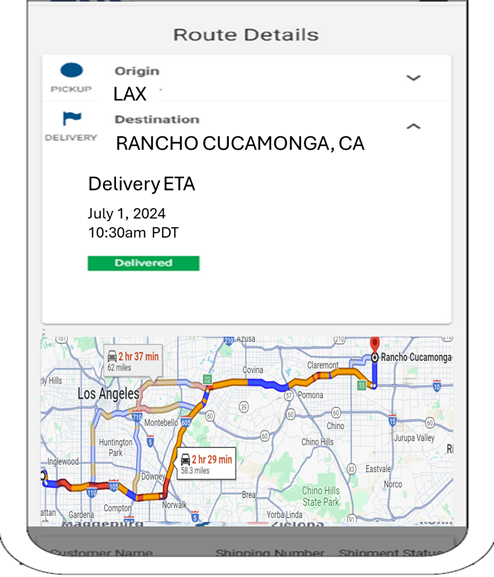In the musical “The Music Man,” there is a song in which the townspeople of River City, Iowa, sing about the arrival of the Wells Fargo wagon. In the show, businesses and individuals eagerly await goods they may have ordered weeks or months earlier. How quaint that seems! Today, we can order items in the morning and have them at our doorstep within a few hours. Companies no longer store parts inventory in warehouses awaiting manufacture; they use Just In Time ordering processes to get the parts as needed. Customers are no longer willing to wait days or weeks for their items; they want them now. It is no wonder that the transportation companies that make those deliveries possible are increasingly turning to real-time information to stay competitive.
Real-time data from monitoring devices in delivery trucks allows trucking companies to optimize their fleet usage and driver safety. They can track driving patterns to ensure the driver is fuel efficient, they can tell in real-time if a driver is showing signs of fatigue or driving in a distracted manner, and they know precisely where the truck is at any moment. They can share that information with the customer and provide an accurate ETA. If a truck or a driver becomes disabled for any reason, they can look at the current location of the rest of their fleet to identify the most efficient way to get the cargo to its destination. They need to know every time the trailer door opens or closes to establish the chain of custody – especially If they are transporting hazardous material or highly valuable goods. These are only a few examples of the kind of real-time data trucking companies use to maintain their competitive edge.

Managing the influx of real-time data requires the rapid processing of high message volumes. At Eradani, we understand this need. We have customers who process thousands of messages per second, and we provide them with support for high-speed message queues and processors. But that’s not all. We also offer support for event-driven brokers like Kafka, Google Pub/Sub, and Amazon’s Pub/Sub technology. These event processors can scale up to handle millions, billions, or even trillions of messages per day.
With an event broker, the onboard devices on the trucks can publish their data in a standard format. Eradani Connect knows how to read the data as a subscriber to the event streams and can transform those messages into IBM i data structures. It can then map the data into the DB2 database or call an RPG program or stored procedure and pass it the data. Eradani Connect monitors the message traffic and provides dashboards of activity and alerts when necessary.
Other industries are following the lead of logistics companies and starting to leverage real-time data. If you would like to find out more about how to add high-performance, highly secure, real-time data sharing to your applications, drop us a note here. We’d love to hear from you.

Dan has spent over thirty years leading companies that help customers implement new technologies in legacy environments. Previously, Dan led worldwide software development groups that built highly successful modernization and DevOps tools and was the CEO of Aldon, the leading provider of DevOps tools to the IBM i marketplace. To learn more about Eradani’s offerings, reach out to us today!





